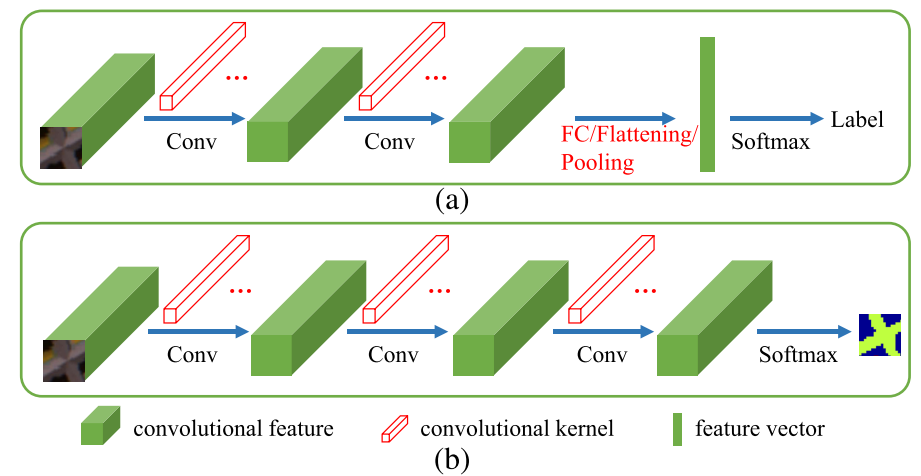Hyperspectral imaging instruments can capture rich spectral signatures and intricate spatial information of observed scenes to generate 3D hyperspectral images (HSIs), which exhibits great potentials for land-cover mapping and detection.
Many works by employing convolutional neural network (CNN) attempt to optimize the HSI classification, due to its ability to identify the land-cover category of each hyperspectral pixel in HSIs. However, the spatial land-cover distributions of cropped HSI cubes are usually complicated that the previously presented CNNs are unable to recognize those changes. Are there any novel methods to address the defect?
A research team led by Prof. Dr. LU Xiaoqiang from Xi'an Institute of Optics and Precision Mechanics (XIOPM) of the Chinese Academy of Sciences (CAS) propose an end-to-end fully convolutional segmentation network (FCSN) for HSI classification. The results were published in IEEE TRANSACTIONS ON IMAGE PROCESSING.

(a) Brief structures of CNNs and (b) proposed segmentation networks. (Image by XIOPM)
According to the researchers, the proposed FCSN is different from coarse labels of HSI cubes in CNN-based methods. To be specific, A fine label style is carefully designed to label each hyperspectral pixel of HSI cubes, which can easily obtain spatial land-cover distributions in HSI cubes.
The proposed FCSN is a pixel-wise method, where the land-cover labels of all hyperspectral pixels in a HSI cube can be identified simultaneously. The FCSN is composed of several simple residual blocks and Residual connection is utilized to facilitate the convergence of FCSN.
Experiment results indicate that only training pixels are utilized to generate various training samples by the proposed HSI cube generation method in the proposed FCSN. The training samples of FCSN are not cropped from the original HSI, which can avoid overfitting and shows superior performance on the augmented databases.
The proposed FCSN shows the superior generalization capability to the changes of
spatial land-cover distributions, supporting the classification of HSI.


